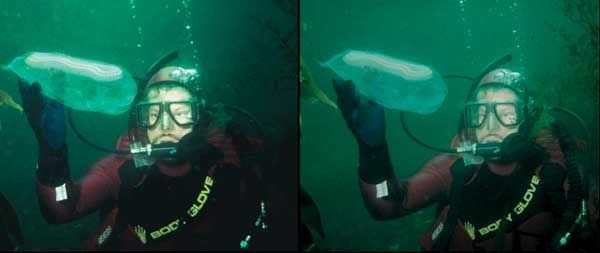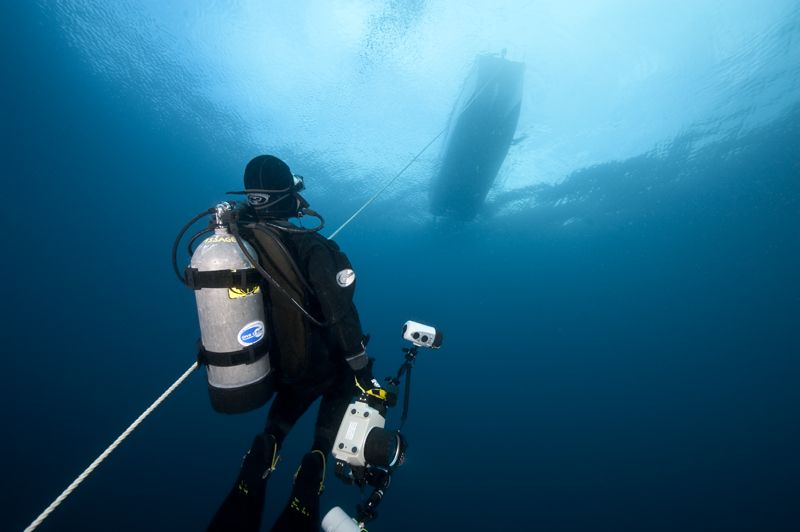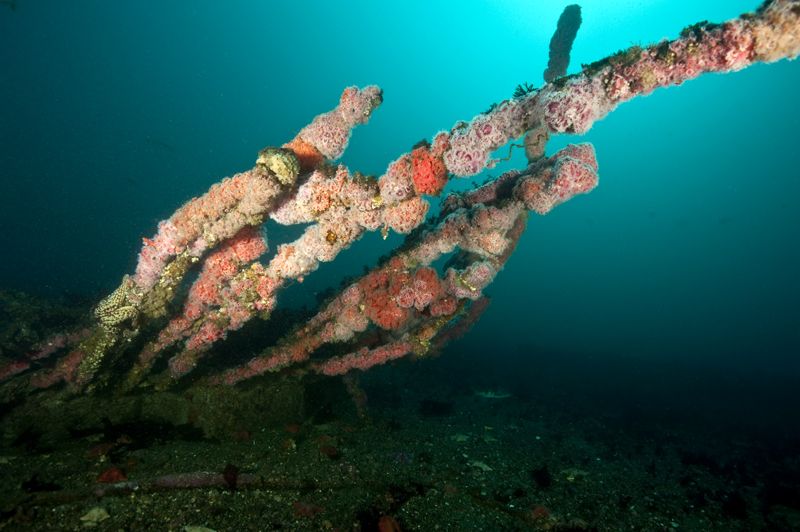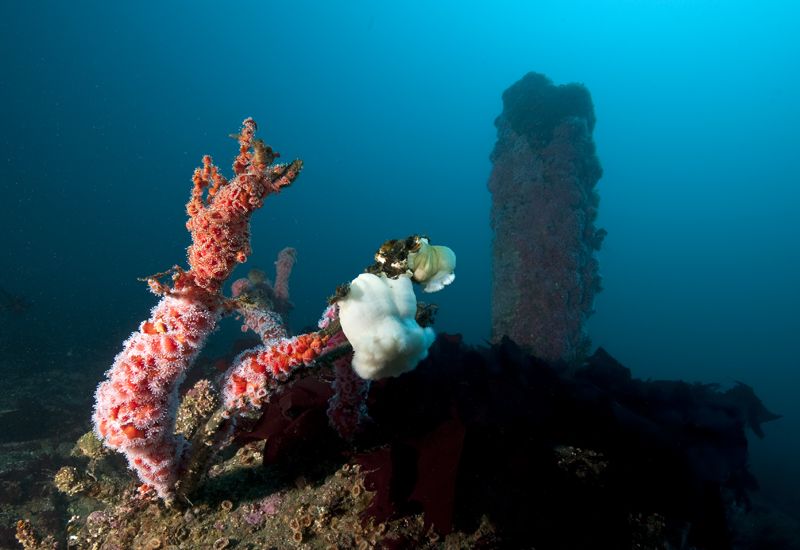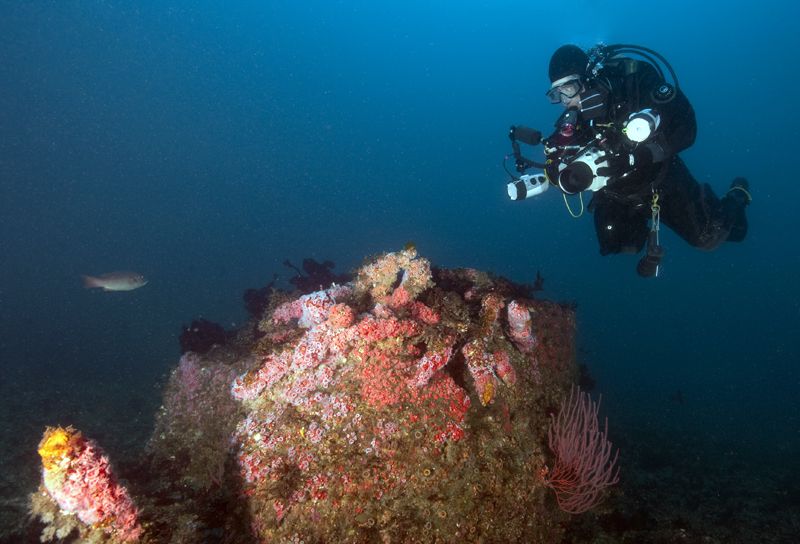Merry
Contributor
In 2012, we were absolutely inundated with salps. Caught in current lines, individual salps littered the surface. Dense swarms of salps at depth appeared either as wheeled bouquets, elegant coils, or slithering chains. In fact, a 2012 survey by the NOAA Southwest Fisheries Science Center in Santa Cruz, performed from the ship Bell M. Shimada, yielded trawl nets that contained as many as 500,000 salps. Contrast this with 235 salps per trawl in 1999! There are about 50 described species of salp. What can be confusing in their identification is that the solitary animal is physically different from a member of the aggregate. Not only are the solitary and aggregate forms morphologically different, but each reproduces differently as well.
The solitary form is the asexual phase of the reproductive cycle. It simply clones itself, producing hundreds of babies that are joined together in chains or coils. The aggregate form, the sexual phase, uses the old-fashioned egg and sperm approach, and produces a single embryo per salp. The two forms alternate each generation, allowing salps to proliferate rapidly and in huge numbers when food is abundant.
Alternation of generations was discovered in salps in 1818 by the German poet, zoologist, and botanist, Adelbert von Chamisso. Chamisso was traveling on a voyage around the world on board the Russian brig Rurik, as part of the expedition to find the Northeast Passage. In recognizing and describing this phenomenon, Chamisso demonstrated remarkable insight. Considering how little was known about marine animals in the early 1800s, its not surprising that his contemporaries didnt buy the idea. Consequently, it took more than 20 years to confirm alternation of generations in salps.
A portrait of Chamisso with one of his drawings.

I thought you might be interested to see representatives of 4 species of salp in their reproductive stages. These species are commonly found around the Palos Verdes Peninsula in Southern California.
I chose Cyclosalpa bakeri to illustrate the reproductive cycle with its alternation of generations.

A close look at solitary phase Cyclosalpa bakeri embryos. The parent salps appear to be deteriorating, as a hoard of feasting hyperiid amphipods contribute to their demise.
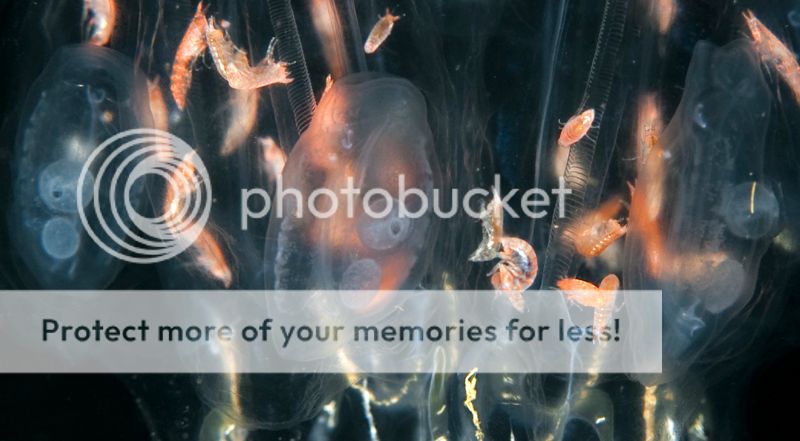
Here's both forms of Cyclosalpa affinis.
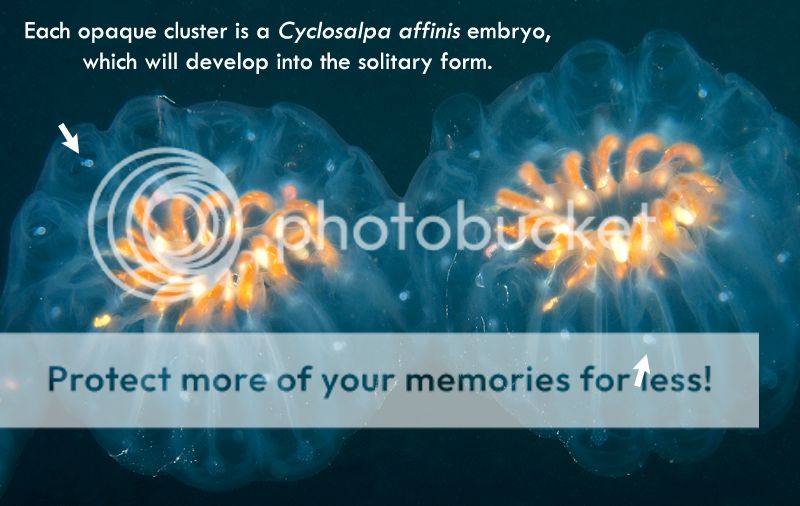

In Pegea confoederata, contrast the aggregate shape with the blimp-like solitary form. This odd salp doesn't look svelte enough to be pelagic!

Here are individuals in the Pegea confoederata aggregate, producing one embryo each. The embryos are attached to the dorsal wall. Theyll develop into a single, globe-shaped animal.

This solitary Pegea confoederata is cloning babies from its reproductive stolon.

Heres another view of the salp chain emerging from the stolon, plus a hitchhiker.
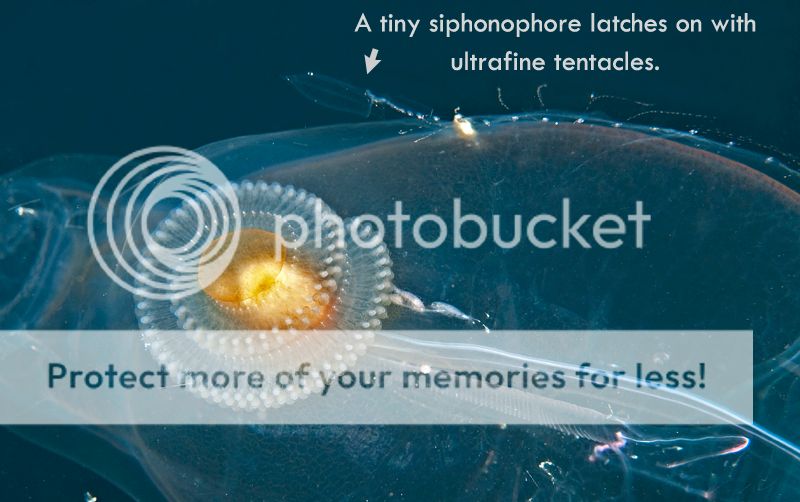
After detaching from the stolon, the small buds of Pegea confoederata rapidly grow into a chain of 5-inch long individuals.

The last species to see is Salpa maxima. It dominated our dives last year in spectacular bloom.

A section of a Salpa maxima chain in the aggregate phase of the life cycle.


This beautiful photo was taken in situ by Larry Madin of Woods Hole Oceanographic Institution. It shows well-developed embryos in a salp chain.

Check out salps carefully during the next bloom. You may find that baby salps are easier to see in a live animal than in a photograph!
The solitary form is the asexual phase of the reproductive cycle. It simply clones itself, producing hundreds of babies that are joined together in chains or coils. The aggregate form, the sexual phase, uses the old-fashioned egg and sperm approach, and produces a single embryo per salp. The two forms alternate each generation, allowing salps to proliferate rapidly and in huge numbers when food is abundant.
Alternation of generations was discovered in salps in 1818 by the German poet, zoologist, and botanist, Adelbert von Chamisso. Chamisso was traveling on a voyage around the world on board the Russian brig Rurik, as part of the expedition to find the Northeast Passage. In recognizing and describing this phenomenon, Chamisso demonstrated remarkable insight. Considering how little was known about marine animals in the early 1800s, its not surprising that his contemporaries didnt buy the idea. Consequently, it took more than 20 years to confirm alternation of generations in salps.
A portrait of Chamisso with one of his drawings.

I thought you might be interested to see representatives of 4 species of salp in their reproductive stages. These species are commonly found around the Palos Verdes Peninsula in Southern California.
I chose Cyclosalpa bakeri to illustrate the reproductive cycle with its alternation of generations.

A close look at solitary phase Cyclosalpa bakeri embryos. The parent salps appear to be deteriorating, as a hoard of feasting hyperiid amphipods contribute to their demise.

Here's both forms of Cyclosalpa affinis.


In Pegea confoederata, contrast the aggregate shape with the blimp-like solitary form. This odd salp doesn't look svelte enough to be pelagic!

Here are individuals in the Pegea confoederata aggregate, producing one embryo each. The embryos are attached to the dorsal wall. Theyll develop into a single, globe-shaped animal.

This solitary Pegea confoederata is cloning babies from its reproductive stolon.

Heres another view of the salp chain emerging from the stolon, plus a hitchhiker.

After detaching from the stolon, the small buds of Pegea confoederata rapidly grow into a chain of 5-inch long individuals.

The last species to see is Salpa maxima. It dominated our dives last year in spectacular bloom.

A section of a Salpa maxima chain in the aggregate phase of the life cycle.


This beautiful photo was taken in situ by Larry Madin of Woods Hole Oceanographic Institution. It shows well-developed embryos in a salp chain.

Check out salps carefully during the next bloom. You may find that baby salps are easier to see in a live animal than in a photograph!




